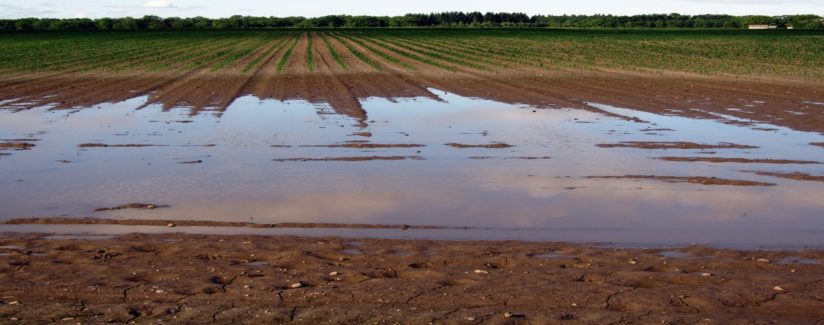
Could Heavy Rains Affect Food Prices?
Extreme rain and flooding this spring has made it difficult for farmers to plant their crops. It may also have an effect on food prices later this year.
The month of May was the second wettest on record for the United States, so it is difficult for farmers to till the fields and plant seeds. Farmers have coined the phrase #noplant19 to describe this year. A small town in Illinois had a prevent plant party.
The USDA Crop Progress report showed that each state was significantly behind on their planting percentage as of June 10. Farmers are usually done planting all corn by now, but only 83 percent has been planted this year. And it is too late in the season in most states to plant any more. Corn is used as feed for beef and dairy cattle, pigs and chickens. It is also an ingredient in many foods.
“The farm-gate price of corn, beans, wheat is such a small percentage of our food cost. Processing, packaging, transportation and handling is the highest percentage. Yes, it will have some impact on the price but for the most part, I don’t think the consumer is going to see any impact,” said Dr. Kim Anderson, a professor and extension specialist at Oklahoma State University with a focus on wheat and export markets.
Only 60 percent of the U.S. soybean crop was planted compared to the five-year average of 92 percent. Soybeans are used in animal feed, cooking oils and ingredients in many foods. Other crops such as cotton and sorghum are also behind schedule.
Dr. Anderson explained that not only are the prolonged rains causing problems to be able to plant fields, the humidity that accompanies these storms is also hurting the wheat crop that is growing and needs to be harvested at this time of year. Because of this, there will be about a 15% reduction in wheat production in Oklahoma for farmers.
Wheat typical to this region is used in baking yeasts and all-purpose flour to make bread.
“With the high humidity, even if it’s dry enough to get in the field, the wheat is not drying out so that we can harvest it,” he said. The quality of the wheat crop in some areas is so poor, some farmers have basically said they are waiting for the fields to dry out just so they can take a match to their crop.
The USDA raised its price forecast for corn by 50 cents per bushel to $3.80 and raised the soybean price by 15 cents per bushel to $8.25, according to a Meatingplace article. Smithfield Foods Inc., a U.S. global packaged foods and meat company, imported corn from Brazil because they expect a shortage of corn in the U.S., according to a Rueters report. Livestock producers are going to feel the increased costs more directly than consumers, Anderson said.
“If we get poor quality wheat — in other words we get sprouting — then that could limit the price increase in corn because they could substitute wheat for corn and we’re going to need to get rid of that feed wheat,” Anderson said in regards to feeding cattle wheat instead of corn.
Stormy weather and mass flooding have made this year difficult for farmers and ranchers. Some crops will not be planted because of the weather. Consumers may see a slight increase in food prices as a result.

























